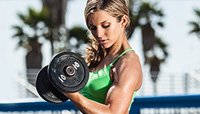Water-soluble vitamins distinguish themselves from the fat-soluble vitamins because they don't store well in the body. The downside to this is that they get depleted fast and deficiency can occur in a very short time. Luckily they are highly present in foods. They are also the best ones to supplement with, as they have the most anabolic properties and a very high toxicity line. Most aren't toxic, as they are readily excreted in the urine. The few that are potentially dangerous only exhibit small side effects, and only in very high doses. That makes water-soluble vitamins, unlike minerals and fat-soluble vitamins, very safe supplements even in mega-doses.
The most important are of course vitamin C and the B-complex vitamins, but others, like vitaminoid PP, choline, and PABA, can be beneficial as well. While the article on fat-soluble vitamins is mostly background for people looking to understand vitamins and why to take a multi, this article focuses on antioxidants and popular supplements.
Vitamin C
The most common form of vitamin C is ascorbic acid. This will almost always be the form you'll find in your supplements. Most of its other constituents along the pathway that converts D-glucose to vitamin C are inactive. Possible alternatives are L-ascorbic acid and dehydroascorbic acid. It is readily made in all plants and the larger animals, making it very available in food. Unfortunately it's highly unstable. Some precautions you should take when storing ascorbic acid are to keep it away from air, heat, prolonged storage, and processing (cooking). Don't mix it with alcohol, birth control pills, or steroids, as all those will deplete C-levels.

One of the best effects I have found of vitamin C, at least for the bulking bodybuilder, is that it renders tyrosine inactive, thereby not allowing conversion to catecholamines, which have ravaging effects on muscle protein. Ascorbic acid is required for the synthesis of collagen, neurotransmitters, steroid hormones, carnitine, conversion of cholesterol to bile acid, and enhancing the bioavailability of iron. I'm sure if you understood all that it has dawned on you that those are very anabolic traits. All of them—no exceptions—are useful functions for more energy, more power, and more mass. All of that makes vitamin C one of the top supplements I would recommend.
Vitamin C has been linked to numerous healing properties over the years, and put forth as a potential cure for anything ranging from the common cold to cancer. Naturally this is exaggerated, but it is a powerful antioxidant. In fact, no substance is so anabolic and at the same time protective of the system it supports. It produces almost no free radicals directly. There is some circumstantial evidence that backs up its uses as a preventer of degenerative diseases, and of course scurvy, which is caused by a lack of ascorbic acid.
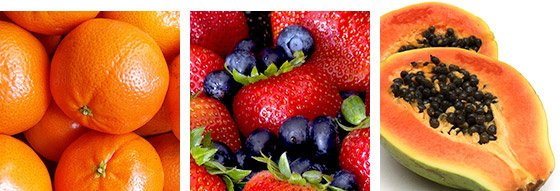
Need more convincing? Vitamin C is needed for the healthy development of cells, proper calcium absorption, normal tissue growth, and repair of damaged tissue (healing of wounds). Therefore it is very synergistic with protein and B-vitamins to provide a very anabolic environment. On top of that, it's key in blood clotting, strengthening of capillaries, enhancing the immune system, and protecting against infection.
This is definitely one of the top supplements I'd recommend, not only for its own amazing properties but because of its effect with other nutrients. Vitamin C has to be a part of your supplementation scheme; at least 120 mg in a multi, but as much as 2000 mg for athletes under severe strain if needed.
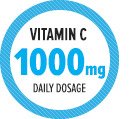
- Deficiency: Leads to poor wound healing, hemorrhages, bleeding gums (all symptoms of scurvy, which is the vitamin C deficiency disease), edema, weakness, and lack of energy.
- Dosage: The FDA recommended dose to avoid getting scurvy is 60 mg daily, but if you feel your diet is deficient in vitamin C, you'll need about 120 mg. For supplementation the standard dose is 1000 mg, but some bodybuilders go as high as 5000. I wouldn't recommend taking more than 1000 mg at a time, so if you prefer 5000 mg, break it up into smaller doses. It's especially good when taken with your post-workout nutrition, or just prior to working out.
- Stacks well with: Vitamin PP, B-complex vitamins, calcium, magnesium, and other antioxidants, as well as protein and most other supplements.
- Sources: Citrus fruits, some leafy vegetables, berries, tomatoes, melons and papayas.
B-Complex Vitamins
You may find this a bit repetetive since a lot of these vitamins have similar functions, in fact they were believed to be one vitamin in the past. A good reason never to take them separately. I get some questions about the anabolic and protective properties of Niacin and pyridoxine. These are two very worthy substances, but I'd never suggest taking them separately. In fact B3 and B6 are probably the two that are most related. But B-vitamins are very synergistic and I see no reason why you wouldn't spring for a B-complex vitamin. It's not very expensive and it will definitely optimize the use of your protein intake. In fact, if you are hard up for money, have to cut back on food and can't afford a lot of supplements, just eat eggs and cheese, drink a lot of milk and supplement with a B-vitamin. Take it from a poor student, you can grow on that. Now peruse some of the effects of the micro-nutrients I find to be the most anabolic. B-vitamins are a constant in my supplementation, even if I am not taking anything else.
Thiamin (Vitamin B1)
Of all the water-soluble vitamins, you are most likely to find yourself short on thiamin if your diet is inadequate. When not getting the minimum 1.5 mg daily, you will find yourself depleted of vitamin B1 in as little as 14 days. A common deficiency disease is beriberi. This can have other causes as well, but giving high doses of B1 in such cases will almost certainly cure it within hours.
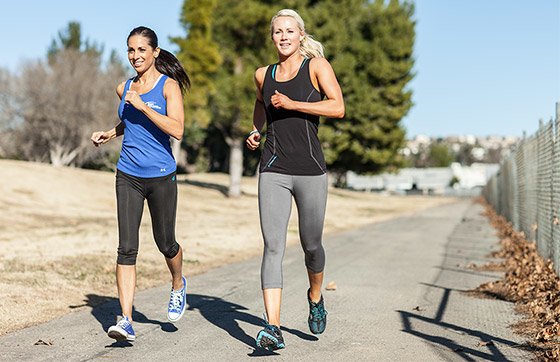
The benefits of thiamin are that it enhances circulation and oxygen supply, increases energy, helps with blood formation, and metabolizes carbs. As you will see, B vitamins are all very good metabolizers. Furthermore, B1 is used in the maintenance of the nervous system and for the biosynthesis of a number of cell constituents. Not unlike the neurotransmitter acetylcholine (also derived from a water-soluble vitamin) and the amino acid GABA (manufactured from arganine under influence of B vitamins), it plays a key role in the manufacture of hydrochloric acid, thereby easing digestion. Thiamin will help you use glycogen more accurately and ease the absorption of nutrients.
SResearch has shown that thiamin may lessen depression, assist in the process of learning, and improve overall memory recall. Where children are concerned, meeting the demand of this vitamin is crucial to proper growth, and in more recent events it has been linked to the treatment of infertility (linked to hormonal conversion), constipation (optimalize fiber use), cataracts (eye health), and arthritis. It is best to eat products containing B1 raw or lightly cooked, because excessive heat will destroy the active nutrient. Also avoid adding alkaline-based products such as soda.
In the active digestion there are over 24 enzymes that use a form of the B1 vitamin, namely thiamin pyrophosphate, as an absorption coenzyme. Most are closely related to the degradation of carbohydrates. In absence of adequate thiamin, the pyruvate-dehydrogenase is inhibited faster than the oxoglutarate dehydrogenase (alpha-ketoglutarate) which will lead to possible toxic conversion of excess carbs. Because of this and certain anti-thiaminic substances in the body and in food, it is always wise to at least meet the demand of B1 daily.
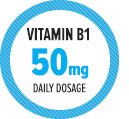
- Deficiency: Leads to irritability, fatigue, constipation, edema, and enlarged liver. Most of these traits are common to the wasting disease beriberi, which can be a result of severe deficiency over a long period of time. Further symptoms of deficiency are forgetfulness, heart damage, loss of appetite, nervousness, numbness of limbs, non-specific pains, poor coordination, weak and sore muscles, general weakness, and weight loss.
- Dosage: The FDA recommended doses for avoiding deficiency are a mere 1.5 grams, so no big deal when on a healthy diet. It is most commonly dosed in 50 mg amounts when supplemented. I find that a more accurate dose for most athletes, but let's say 100 or so wouldn't be bad.
- Stacks well with: Carbohydrates, other B vitamins, vitamin C, GABA and ZMA.
- Sources: Sunflower seeds, egg yolks, peanuts, beef liver (dessicated!), pork, seafood, and beans. B1 is readily manufactured by ATP-ase, but not in humans. It is found in high doses in vegetables, algae and mushrooms.
Riboflavin (Vitamin B2)
B2 is not actually ingested, but made by intestinal flora from digested flavonoids. It is one of the easiest nutrients to absorb, but also, as with all water-soluble vitamins, one of the easiest to excrete. This makes for an almost constant need of Riboflavin. At least the minimum dose daily. There is no bodily supply of it.
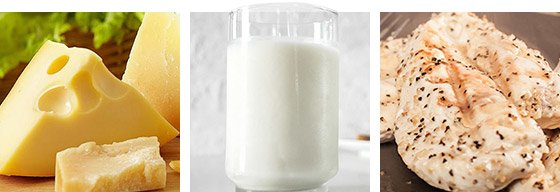
Much like the B1 vitamin, riboflavin is used to better the use of oxygen by cells and the transportation thereof in the blood. It also aids in the metabolism of carbs, but you'll find B2 to be equally effective with fatty acids and amino acids. B2, though not very effective at its thing when taken separately, is an intricate part of the B-complex, because it is needed to activate the B6 vitamin (pyridoxine) and to help manufacture the B3 vitamin (niacin) to assist in the adrenal gland functioning. It is largely responsible for the production of antibodies in the white blood cells (proving that B-vitamins have antioxidizing properties as well) and plays a role in cell growth as well as cell respiration.
For the scientifically minded among you, I found some interesting bits. Other forms of B2, flavine mononucleotide (FMN) and flavine adenine-dinucleotide (FAD) are important elements in biological oxidations. Further, I found that Riboflavin is used to ease watery eye fatigue and may help in the prevention and treatment of cataracts. In the digestive tract it maintains the health of the mucous membranes (absorption channels) and aids the absorption of both B6 and iron.
To bring this to a conclusion, I can state that B2 is especially needed in times of growth and during high protein intake, for the maximal digestion and use of building amino acids. It also provides you with healthy skin and hair. Take precautions when storing or preparing riboflavin, because it cannot tolerate light very well. Store it in a dark place.
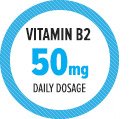
- Deficiency: Sores near or in the mouth are common for deficiency in riboflavin, as are eye disorders, inflamation of the mouth and tongue, dizziness, hair loss, insomnia and poor digestion. In children it can lead to retarded growth.
- Dosage: Standard recommendation is a mere 1.8 mg daily, but generally taken in 50 mg amounts. Whatever the case, try to get the same amount of B6 as you would B2.
- Stacks well with: Other B vitamins, especially B6, ZMA, anti-oxidants, Iron.
- Sources: Organ meats, nuts, cheese, milk, eggs, lean meat in large quantities, but also trace amounts in leafy veggies, fish, yogurt and grain.
Niacin (Vitamin B3)
Niacin is also known as nicotinic acid or niacinamide, which are derivatives of B3, though nicotinic was once considered a separate vitamin, B4. It is used for—you guessed it—cell respiration and the metabolization of carbs, protein, and fatty acids. It also assists with the maintenance of circulation and skin, functioning of the nervous system, and the normal secretion of bile acid and stomach fluids.
Of more importance to the bodybuilder may be the link between B3 and the manufacture of sex hormones.
Nicotinic acid given in high doses may improve blood cholesterol profiles and help the bodycleanse itself of organic poisons. It's also a memory enhancer. Do not cook B3-containing elements in water.
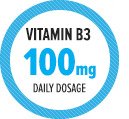
- Deficiency: B3 deficiency is commonly known as pellegra, and consists of dermatitis, diarrhea and dementia. Other ailments are canker sores, depression, dizziness, fatigue, headaches, indigestion, insomnia, loss of appetite, and low blood sugar.
- Dosage: A little higher than most B-vitamins, a 20 mg daily dose is needed for proper functioning, but preferably supplemented in 100 mg doses.
- Stacks well with: B-complex, MCT's, creatine and protein
- Sources: Liver, lean meat, poultry, rabbit, nuts, cereals, milk, and fish.
Pantothenic acid (vitamin B5)
Manufactured by the intestinal flora, B5 is often referred to as the anti-stress vitamin because it is involved in the manufacture of the hormones that are commonly associated with battling stress. It plays a very important role in the secretion of cortisol and by supporting the adrenal gland in that fashion, also in a minor part in the manufacture of cathecholamines (dopamine and epinephrine, norepinephrine). Through this effect it may also be a link in the metabolism of fatty acids to stimulate weight loss. And as with all B-vitamins it also aids in the metabolization of carbs and protein and is beneficial to the health of skin and nerves.
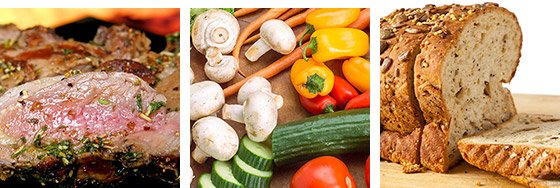
It helps to fight allergies and strengthens immunity. The importance of pantothenic acid expresses itself in its presence in coenzyme A. This enzyme is needed for the formation of citrates and the oxidation of pyruvates and alpha-ketoglutarates. Not to mention synthesis of triglycerides and cholesterol. Pantothenic acid is best preserved in a neutral environment. It is most bioactive when not cooked and when kept from overly acidic or alkaline environments. So don't add soda or any acidic nutrients like citric acid or vinegar.
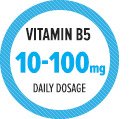
- Deficiency: Fatigue, headache, nausea, depression, muscle weakness, cramps and abdominal pains are common symptoms of B5 deficiency. But the worst thing to a bodybuilder is that lack of B5 will lower serum levels of potassium and lower HDL in the circulation.
- Dosage: There is no recommended daily intake for pantothenic acid since it is readily made in the intestinal flora under the right conditions. It is usually supplemented in doses of 10 to 100 mg. In most B-complex stacks 10-20 is advisable.
- Stacks well with: B-vitamins, ECA-stacks, protein-dense foods and potassium.
- Sources: Beef, brewer's yeast, eggs, fresh vegetables, nuts, pork, saltwater fish and whole wheat.
Pyridoxine (vitamin B6)
Of all the B-vitamins, B6 is perhaps the most important for mental and physical health. This is especially true for women because it balances female hormones and assists in immunity. But pyridoxine is also important for the growth of new cells, used to process and metabolize carbs, protein and fats (are you getting tired of that one yet?) as well as controlling behavior and mood. Medically its most common uses include the treatment of children with learning difficulties, the prevention of dandruff, psoriasis and eczema, all common skin malfunctions.
B6 balances sodium and potassium and promotes the production of red blood cells (yet again). It is needed for the manufacture and part of the nucleic acids RNA and DNA. It has been linked recently in the improving of immunity against cancer and it is known to fight the conversion of cystine to the toxic substance homocysteine, a product very detrimental to hart tissue. B6 is often used in medicinal supplements as a liver detoxifier.
Women may find supplemental pyridoxine essential to combatting premenstrual fluid retention, avoiding menstrual pains, and minimizing acne or nausea during pregnancy. In the absence of B6 you will notice severe mood swings, depression, and loss of sex drive. Pyridoxine should be stored in a dark, cool place, and preferably consumed uncooked. Please keep in mind that high cortisol levels or the use of cortisone will destroy B6.
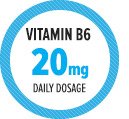
- Deficiency: Irritability, nervousness, weakness, insomnia, rigid nails, inflamed tongue, osteoporosis and arthritis. But skin changes like dermatitis and acne breakouts are not uncommon either. Deficiency is similar to that of B3, since B6 is a key element in the manufacture of Niacin.
- Dosage: 2 mg is the FDA's minimum dosage, but in supplements 20 mg is the normal dose. B6 can be toxic in excess of 2000 mg.
- Stacks well with: B-vitamins, vitamin C, Magnesium, Potassium, Sodium, Zinc, CLA, MCT's
- Sources: Eggs, chicken, fish, liver, kidneys, peas, walnuts, wheat germ. Carrots and yeast are high in B6 as well
Folic acid (vitamin B9)
Known chemically as pteroylglutamic acid, but known as Folic acid, folacin or folate. It is manufactured within the body, and unlike the preceding B-vitamins, can be stored up to a certain amount in the liver. Folic acid exerts its main importance in the synthesis of DesoxyRibonucleic acid (DNA), cell growth, red blood cells and the formation of non-essential amino acids from ingested and stored protein sources. It plays a vital role in the energy production and it creates heme, the iron-containing active substance in hemoglobin (blood substance).

B9 vitamins are needed for healthy cell division because folic acid mainly, is a coenzyme for RNA and DNA synthesis. For bodybuilders maintaining Folic acid balance is important for muscle protein metabolism and improving digestion. Medically it is used to treat folic acid anemia, which can be detected through symptoms of indigestion, depression and anxiety.
Like B6 folic acid is also important for women, especially in pregnancy. It is used in the development of nerves in fetal tissue throughout the carry and could prevent cervical cancer. Smokers should be aware that smoking of any kind will deplete folic acid, and they should be the first ones looking into supplementation. Do not store folic acid longer than you have to, and keep it away from heat and light.
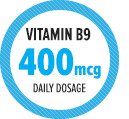
- Deficiency: Fatigue, acne, sore tongue and long term deficiency will lead to anemia and ultimately resulting in cancer of bowels or cervix or osteoporosis.
- Dosage: 400 mcg daily is the minimum need, more can't hurt, but generally this dosage is adhered to for supplementation as well.
- Stacks well with: Protein, B12, B6 and vitamin C.
- Sources: Both green and starchy vegetables, most fruits, beans and liver.
Cyancobamin (vitamin B12)
Cyancobamin and cobolamin are the most common forms of the B12 group, and is one of the most supplemented vitamins around, mostly due to its uses as an appetite stimulant and an energy booster. I don't approve of the practice. It's probably healthier to match B-vitamin intake according to overall intake.
B12 is a complex structured compound with a certain content of cobalt, a trace mineral needed in small amounts by the body. It promotes growth and naturally red blood cell manufacture. B12 can clear up infections, aid in combatting allergies and is linked to cancer prevention. And just in case you thought this was an exception, it is used to metabolize protein, carbs and fatty acids. There is no real need for B12 but is nonetheless often stacked by athletes. The only people who will need extra are vegans, since most of the sources are animal.
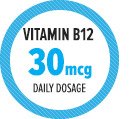
- Deficieny: The raise of homocysteine levels is the only known effect of B12 depletion. Homocysteine will damage the brain and could lead to Alzheimer. Its also largely responsible for heart disorders and the eroding of myelin around the nerve, causing nerve damage.
- Dosage: 3 mcg minimum dose daily, generally given in 30 mcg or higher doses.
- Stacks well with: Calcium, Iron, potassium, Sodium and vitamin C
- Sources: Liver, organ meat, muscle meat, shellfish, eggs, cheese, fish and milk when not processed at a high temperature. It is also made in the body.
Biotin (vitamin H)
It's a strange name for a B-complex vitamin, I agree. But as water-solubles go, this may be one you should look into. Next to the (get ready:) red blood cell formation, the metabolism of protein, carbs and fats and the growth of cells H can also be important in the Krebs cycle, allowing for prolonged exercise and energy production under extreme pressure. For this it will stack well with ATP increasing substances.

For aging men Biotin is critical for health of hair and skin, as well as sweat glands and nerve tissue. It also promotes better bone marrow and deficiency can be a cause of thinning of hair or hair loss.
Biotin assists in many biological conversions, acts as a coenzyme in over 40 processes, and transfers carbon dioxyde. It also helps in maintaining a good blood sugar level. And as a metabolizer of the semi-essential amino acid tryptophan it forms a key element in protein processing. Some precautions about the use of Biotin are to avoid consuming it with raw eggs. Raw eggs contain avidin which can bind biotin and escort it out without it being absorbed. Other than that Biotin is not easily destroyed.
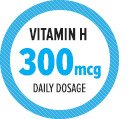
- Deficiency: Rarely occurs, results in fatigue, loss of appetite, hair loss, nausea, vomiting and high cholesterol
- Dosage: 300 mcg, but mega-doses are allowed since no toxicity was established.
- Stacks well with: PABA, B5 and B9, but also great with creatine and Ribose.
- Sources: Cheese, mushrooms, salmon, spinach, broccoli, yeast, chicken breast, nuts and beef liver. It can be manufactured in the body in times of deficiency.
Other B-vitamins are B13 (orotic acid), B15 (panganic acid) and B17 (laetrille or amygdalin). All three are relatively unknown substances and information on them is scarce, both where deficiency and toxicity is concerned. All three can be made in the body by other B-vitamins and they are currently considered non-essential.
B-Complex Factors
The following substances aren't actual vitamins, but because of their link to and similarity in structure they are classed as B-vitamins. You will find that these are also present in most B-complex stacks and are essential to optimalizing the use of the B-group vitamins. Next to, of course, many individual uses.
PABA (Para-aminobenzoic acid)
This is probably mostly known as an active ingredient in sunscreen lotions to most of you. It is indeed very protective of the skin and especially against the ravaging effects of the sun's UV-rays. But PABA is also a nutritional element, a moety of PGA (form of folic acid) and is the main metabolizer in the manufacture thereof. It isn't considered an actual vitamin, but a B-complex factor.
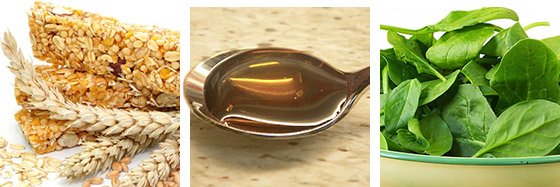
It increases the proper protein use within the body by breaking down protein to aminos in the body, and maintains intestinal flora. Naturally its primary domain is located in the digestive tract and mainly in the intestines. As part of the B-complex it also aids blood cell formation and it has been linked to hair growth and the reversal of gray hair, though studies to this effect have been very disappointing. It is used as a cure for vitilligo, a disease that displays symptoms of over- or underpigmentation of the skin. Too high of a blood concentration of PABA in your system could lead to a decrease of vitamin D formation from sunlight, nausea, skin rashes, vomiting and when stored in high doses throughout the body may have a devastating effect on the liver. Luckily the toxic dose is very high.
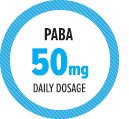
- Deficiency: Irritability, depression, nervousness, constipation, eczema and skin blemishes are the most common symptoms of PABA deficiency
- Dosage: There is no RDA limit set for this substance, but is generally administered in 50 mg doses and should be present to some extent in your daily diet.
- Stacks well with: vitamin B9 and vitamin C, protein
- Sources: Liver, kidney, yeast, grains, mushrooms, spinach, molasses and intestinal bacteria
Choline
The metabolism of the popular choline is closely related to that of the essential amino acid methionine and that of the B9-vitamin methyl-folate. It is often treated as a link to micronutrients and not an actual nutrient, though its many uses seem to prove otherwise. Choline is a must for people who risk vitamin D toxicity, as choline will decrease D-formation. It is mainly found in phospholipids such as lecithin (phosphatidylcholine).
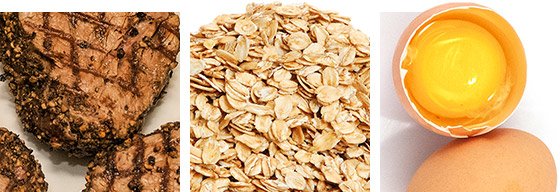
Though some will have you believe choline is a fat-loss agent, it is not. It does have a controlling influence over both weight and cholesterol levels. It keeps cell membranes in good condition and remains critical for their structure and function. Furthermore choline may prevent galstones, maintain myelin around nerves, assist in memory functioning and be a major player in the fighting of infections like hepatitis and AIDS.
As a precursor of betaine it operates in the kidneys to preserve water balance and in the liver it is an important source for methyl-groups to form methionine. It is also the main substance in the neurotransmitter acetyl-choline, which opens and closes chemically-gated membrane receptors for potassium and is the most important neurotransmitter along with the sodium related GABA. In this manner it assists in nerve-impulse transmission. It also regulates gal-bladder functioning and liver functioning.
In doses in excess of 3.5 grams you may find yourself nauseated, smelling malodorously (fish odor syndrome), feeling depressed, oversalivating or get diarrhea. In even higher doses epileptic attacks and severe hypotension and sweating are possible as well. Choline makes up lecithin along with fat, insositol and unsaturated fatty acids by using B6 and magnesium as a coenzyme. A short supply of lecithin leads to high levels of blood cholesterol.
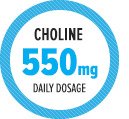
- Deficiency: Not common, but will lead to liver damage, raised cholesterol, high blood pressure and kidney problems, but also stunted growth and inability to digest fats.
- Dosage: Usually 550 mg daily, but depending on your daily fat intake it should be higher. Remember that the toxicity dose is 3.5 grams. Most B-complex vitamins will not supply adequate choline (50-100 mg).
- Stacks well with: vitamins A and B, inositol, CLA, flax oil
- Sources: Egg yolks, beef, oats and nuts as well as liver.
Inositol
The last of the B-factors, inositol is crucial to cellular health and is found in good concentrations in the lens of the eye and the heart-tissue. Some men taking medical doses of inositol report improvement in hair loss and even some hair growth, though this hasn't been clinically tested.
It is used to maintain cell membranes, especially in brain cells, bone marow, eyes and intestines. The membranes regulate the contents of a cell, letting all the nutrients in and out. Inositol is also important for anyone wishing to maintain healthy hair and hair growth. Most of the research I have done into inositol (and I don't generally research a lot of vitamins) was as a possible anti-estrogen. Inositol is namely a very potent estrogen regulator for both males and females. I got interested in these effects when I was studying prohormones. Though in these instances inositol only exerted a minor effect, the tests showed that it can cancel out environmental estrogens caused by high bodyfat, alcohol abuse or substances in packaging. Caffeine may destroy the nutrient, and it should not be taken with antibiotics.
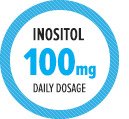
- Deficiency: Levels of cholesterol will go up and hair loss, eczema, constipation and eye-related abnormalities are the most common symptoms.
- Dosage: No necessity established, usually given in 100 mg daily doses. Higher doses are common, because this is a popular supplement. Diarrhea may occur with very high intake but no toxicity line is established.
- Stacks well with: vitamin E, Vitamin C, B9-vitamins, CLA, flax and choline
- Sources: The richest source is from phytic acid in some plants, but since they can bind to minerals they may not be all that absorbable. It can also be made in the body. Food sources include bananas, liver, brown rice, nuts, raisins and vegetables.
Bio-Flavonoids (vitamin P)
Though not a real vitamin (that hasn't stopped me so far) Bio-flavonoids are classed as such. They are a whole host of ingredients including, but certainly not limited to, hesperin, hesperidin, eriodictyol, quercitin, rutin, etc. Vitamin P cannot be made in the body and the entire bodily need is dependent on food intake.

It's most commonly linked to the enhancement of vitamin C (so it may be wise to stack the two), by enhancing uptake and prolonging use, and the treatment of sport injuries, mainly as a pain reliever. It can relieve strains and pains in the back, the legs as well as put a halt to prolonged bleeding of deep wounds, increase serum calcium levels (handy for those taking creatine, because calcium ions are a creatine shuttle) and a treatment for oral herpes.
In the blood it improves immunity by fighting harmful bacteria, preserving structures of the capillaries (will prevent bleeding and bruising) and promoting the circulation. As far as production goes it is used in the manufacture of bile and triglycerides. It also promotes eye health and is administered to people with a high risk of cataract. To put it in short, vitamin P is a substance that will go a long way in helping nutritional needs and preventing disease.
A little household medical tip: if you have sores of any kind on your skin, stack Vitamin C and P in high doses. Oh, and did I mention it helps to absorb the all-important trace mineral Iron?
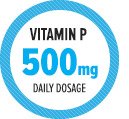
- Deficiency: lack of Iron because of bad absorption and you might bruise more easily. Preventing deficiency can be as simple making sure you have veggies and fruit in your diet.
- Dosage: No recommended dosage, usually 500 mg will go a long way, when supplementing with Iron you may wish to take more (1000 + mg). Uptake of the vitamin is slow but small amounts can be stored in the body, so deficiency will not occur overnight.
- Stacks well with: vitamin C, calcium and Iron.
- Sources: Peppers, grapes, berries, onions, garlic, tea, wheat and the white stuff in orange peels. Can be found in pine bark but that doesn't sound very taste.
That's my bit as far as the water-solubles go. You will have noticed if you were paying attention that every one of these substances are of extreme importance to an athlete's performance. Making sure you get your minimum amounts at the very least is necessary, but supplementation of B and C-vitamins are as good a choice as any other supplement you may find at your local supplement store. Next to my big three, these are probably my most recommended supplements. Never assume that you are getting adequate vitamins, eating calorie-dense foods as bodybuilders will, can lead to chronic deficiency and along with an increased food intake comes an increased need for water-soluble vitamins. So anyone consuming as many calories as we do will find that a supplemental B-vitamin complex and some extra vitamin C post-workout will go farther than anything else you can swallow.
As any good tradesman knows, you have to start with a solid foundation to build a masterpiece, and no matter how much quality material you have in the likes of carbs, fats and protein, you can't build on bad ground. So remember to take your vitamins.
Recommended For You

Vindicating Vitamins: Protecting Your Health Is Never A 'Waste'
Don't fall for sensational headlines and slanted science about vitamin/mineral supplementation. Nothing short of your long-term health is at stake.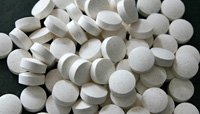
20 Vitamins And Supplements To Increase Longevity!
Everyone seems to still be looking for that magical fountain of youth. One of the many ways to achieve this goal is by focusing on nutrition, exercise, and taking vitamins and supplements.